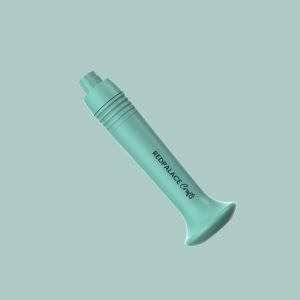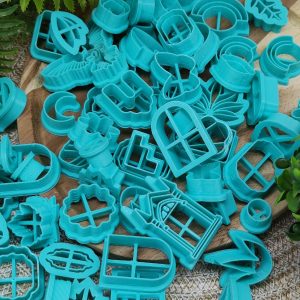Polymer clay artisans continually seek innovative ways to add depth and personality to their creations, and texture rollers have become an invaluable tool in this journey. In this guide, we’ll delve into the art of using texture rollers for polymer clay, sharing expert tips and shedding light on the manufacturing process that sets these tools apart.
1. Application Techniques: Achieving the perfect texture on your polymer clay requires finesse. Before rolling the texture roller over the clay, lightly dust the surface with either cornstarch or baby powder. This creates a barrier that prevents the clay from sticking to the roller. Alternatively, you can use a thin layer of plastic wrap to achieve a non-stick effect. Experiment with different pressures and rolling directions to discover unique patterns and textures.
2. Color Variation Clarification: It’s important to note that the color of the texture roller may vary based on availability. However, maintaining consistency within the same brand ensures reliable quality. This variation is merely aesthetic and does not impact the performance of the roller.
3. Crafting Polymer Clay Earrings: As creators of polymer clay earrings, we intimately understand the challenges faced in the crafting process. Our commitment to providing the best tools for artisans led us to the development of these texture rollers. We’ve meticulously designed them to enhance the texturing experience, allowing you to create intricate and beautiful designs effortlessly.
4. Eco-Friendly Production: Our dedication to sustainability is reflected in the materials used to craft these texture rollers. Unlike traditional rollers, ours are made from plant-based resin, making them biodegradable. Additionally, they are free from VOCs, BPAs, and other harmful chemicals, ensuring a safe and eco-conscious choice for your crafting endeavors.
5. Versatility in Design: Texture rollers open up a world of design possibilities. Whether you’re aiming for a rustic, natural look or a more intricate and detailed pattern, the right texture roller can bring your vision to life. Experiment with different rollers to discover the styles that resonate with your artistic expression.
6. Maintenance and Storage: To prolong the life of your texture roller, it’s essential to clean it thoroughly after each use. A soft brush or cloth can be used to remove any residual clay. Store the roller in a cool, dry place, away from direct sunlight, to prevent any warping or damage over time.
Conclusion: Texture rollers are not just tools; they are gateways to a world of creativity in the realm of polymer clay. By mastering the application techniques, understanding the manufacturing process, and exploring the versatility they offer, you can elevate your craft and produce truly exceptional pieces. Happy crafting! Is there anything specific you’d like to add or modify?


